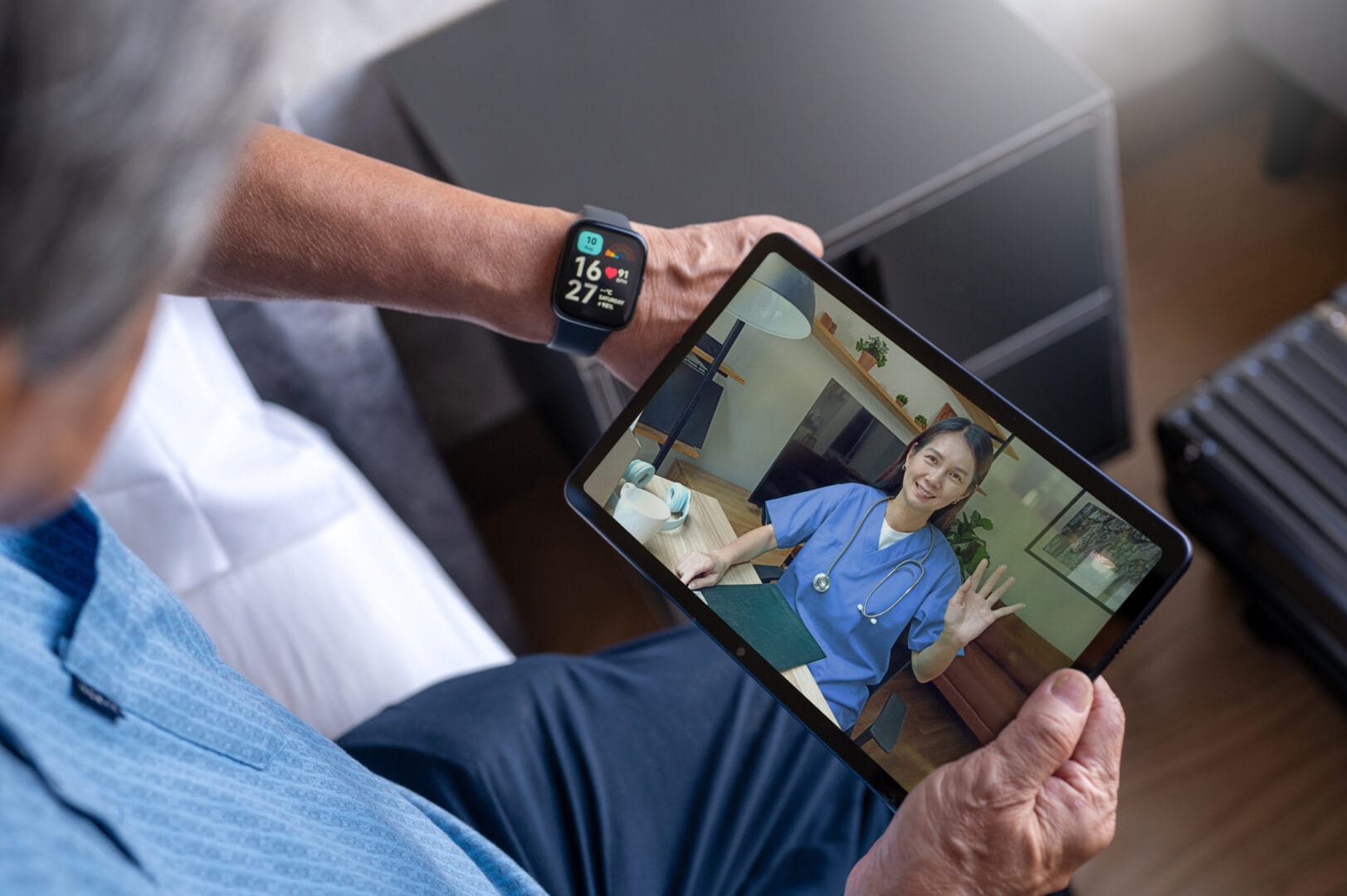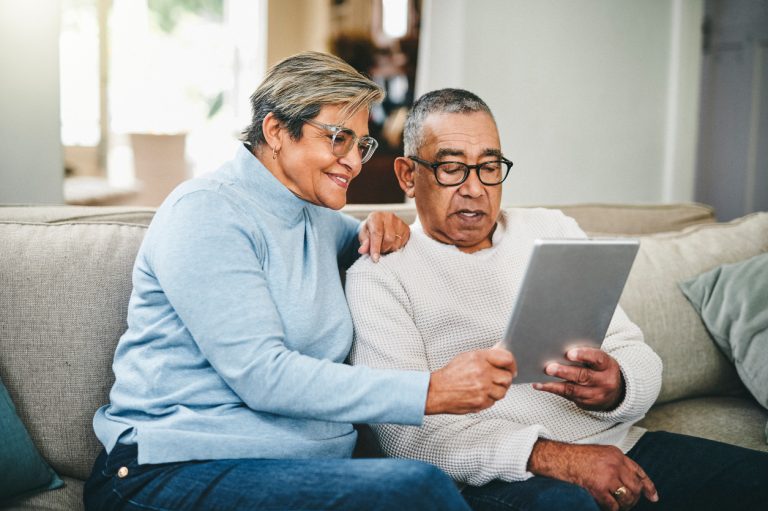In today’s fast-paced world, communication is a vital lifeline for everyone, especially seniors. For older adults, effective communication is often the bridge to better health, stronger family bonds, and improved overall well-being. However, seniors and their caregivers often face unique challenges such as mobility limitations, distance from loved ones, and cognitive decline. Fortunately, senior care technology is playing an increasingly critical role in overcoming these barriers. From video calling apps to wearable health devices, these innovations are transforming how seniors and caregivers connect.
The Expanding Impact of Senior Care Technology
Technology has revolutionized nearly every aspect of life, including senior care. Over the past decade, the adoption of digital tools among older adults has increased significantly. According to a report by Pew Research, 75% of Americans aged 65 and older now use the internet, a number that continues to grow annually.
Communication is a cornerstone of effective caregiving, but traditional methods like phone calls or in-person visits often fall short. This is especially true when geographic distance or medical conditions limit interaction. Maintaining strong connections is critical for seniors' emotional and mental health. Technology serves as a powerful tool to overcome these challenges, offering accessible and innovative solutions for seniors and their caregivers.
Key Innovations Enhancing Communication in Senior Care
Video Calling Apps
Video calling has become a staple for staying connected, especially during events like the COVID-19 pandemic when in-person visits were limited. Apps like Zoom, FaceTime, and Skype are easy to use and allow seniors to see their loved ones in real-time, fostering a sense of closeness.
For example, a study published by the National Institutes of Health highlighted how video communication tools significantly reduce feelings of loneliness among older adults. Seniors who regularly use these apps report better emotional well-being and improved relationships with family members. Specialized apps such as Care.ly also help caregivers stay connected by offering features like shared calendars and health updates.
Building upon the advantages of video calls, these platforms empower caregivers to check in visually, ensuring seniors are safe and well without requiring frequent in-person visits.
Health Monitoring Wearables
Wearable devices are another game-changer in senior care technology. Devices like the Apple Watch, Fitbit, and fall detection systems such as Life Alert allow real-time monitoring of seniors’ health. These tools can track vital signs, detect falls, and send instant alerts to caregivers.
For instance, a senior wearing a smartwatch can share their heart rate, blood pressure, or activity levels directly with their caregiver or doctor. This creates a seamless flow of information that enables caregivers to respond promptly in emergencies. A report from the American Medical Association highlights the positive impact of remote health monitoring on senior care outcomes.
Wearable devices also contribute to better communication by providing caregivers with objective health data. This reduces misunderstandings and ensures everyone involved in the senior’s care has accurate information.
Digital Communication Platform
Traditional communication tools can fall short when managing complex care needs. Digital communication platforms like CaringBridge and MyKin fill this gap. These platforms are designed specifically for caregiving and allow families to coordinate care efficiently.
For example, CaringBridge lets caregivers and family members post updates, share schedules, and send messages in one centralized location. This eliminates the need for multiple phone calls or emails, ensuring that everyone stays informed.
Another platform, MyKin, offers features like medication reminders and appointment scheduling, further simplifying the caregiving process. These tools enhance not only communication but also the overall quality of care.
Voice-Activated Technology
Voice-activated devices such as Amazon Alexa and Google Home have become increasingly popular among seniors. These tools allow older adults to make calls, send messages, and access information simply by using their voice.
For seniors with mobility challenges or vision impairments, voice-activated technology can be a lifeline. They can easily connect with caregivers or loved ones without needing to navigate complicated interfaces. Additionally, these devices can be programmed to send alerts, provide reminders, or even control smart home features, offering greater independence to seniors.
According to a survey by AARP, voice-activated technology is one of the most widely adopted tools among older adults, with 40% of users reporting improved communication with family and caregivers
Benefits of Senior Care Technology for Communication
Strengthened Family Connections
As highlighted in the section on video calling, technology fosters stronger family bonds by enabling regular, meaningful interactions. Seniors who use communication tools report feeling more connected to their loved ones, even when they live miles apart.
For example, a grandparent who uses FaceTime to chat with their grandchildren can participate in family life in a way that would be impossible through phone calls alone. These connections have a profound impact on seniors’ emotional well-being, helping them feel valued and loved.
Improved Caregiver Coordination
Digital platforms and wearable devices streamline communication between caregivers, doctors, and family members. By centralizing information and automating updates, these tools reduce misunderstandings and ensure everyone is on the same page.
As discussed earlier, wearable devices play a crucial role here. For instance, a caregiver can receive an instant alert if a senior’s wearable detects an irregular heartbeat, allowing for quick action. This level of coordination significantly enhances the quality of care provided.
Increased Independence for Seniors
One of the most empowering aspects of senior care technology is its ability to promote independence. Tools like voice-activated devices and digital communication platforms allow seniors to manage their daily activities with minimal assistance.
For example, a senior using Alexa can set reminders for medication, turn on lights, or even make a call to their caregiver—all without leaving their chair. This independence not only boosts seniors’ confidence but also reduces the burden on caregivers.
Overcoming Barriers to Technology Adoption Among Seniors
While the benefits of senior care technology are undeniable, adoption is not always straightforward. Common challenges include a lack of tech literacy, resistance to change, and concerns about privacy.
To address these issues, many organizations offer workshops and tutorials designed specifically for seniors. For instance, the nonprofit TechBoomers provides free online courses that teach older adults how to use popular apps and devices. Additionally, many developers are designing senior-friendly interfaces that prioritize simplicity and accessibility.
As discussed earlier, voice-activated devices also help overcome these barriers by eliminating the need for complex navigation. By addressing these challenges, we can ensure that more seniors benefit from the transformative potential of technology.
Conclusion
Senior care technology is revolutionizing how older adults and caregivers communicate. Innovations like video calling apps, health monitoring wearables, and voice-activated devices are not only bridging communication gaps but also improving health outcomes and fostering independence.
As the adoption of these tools continues to grow, the future of senior care looks brighter than ever. For families and caregivers looking to enhance communication, consulting a senior care advisor or exploring resources on AssistedLivingLocators.com can be an excellent first step.
Senior care technology isn’t just a convenience—it’s a lifeline that empowers seniors to lead healthier, more connected lives.



